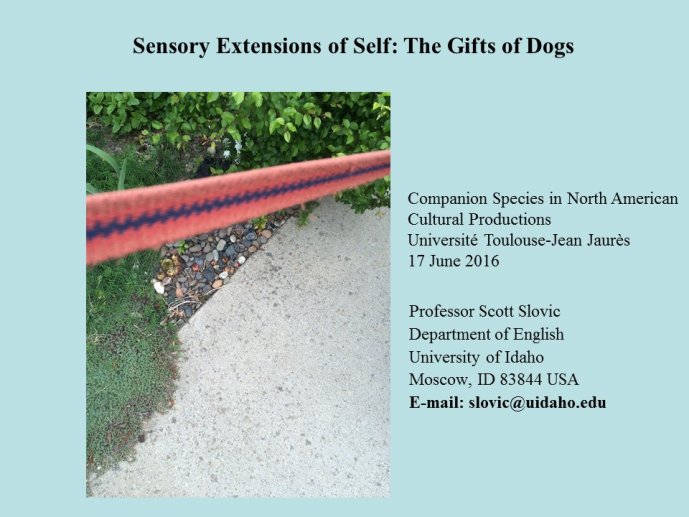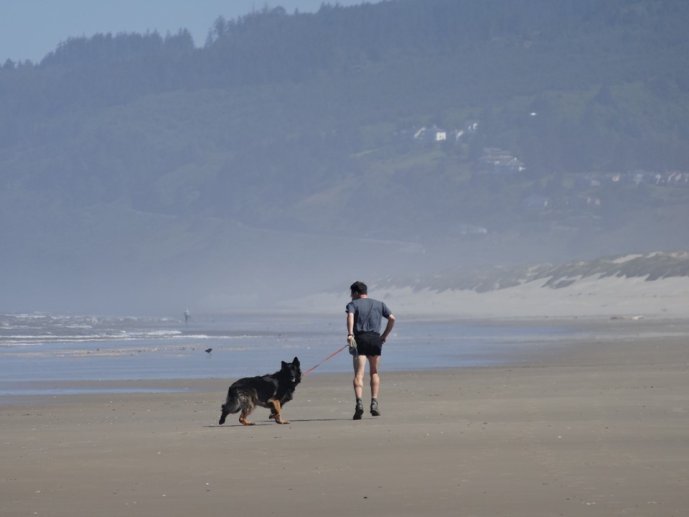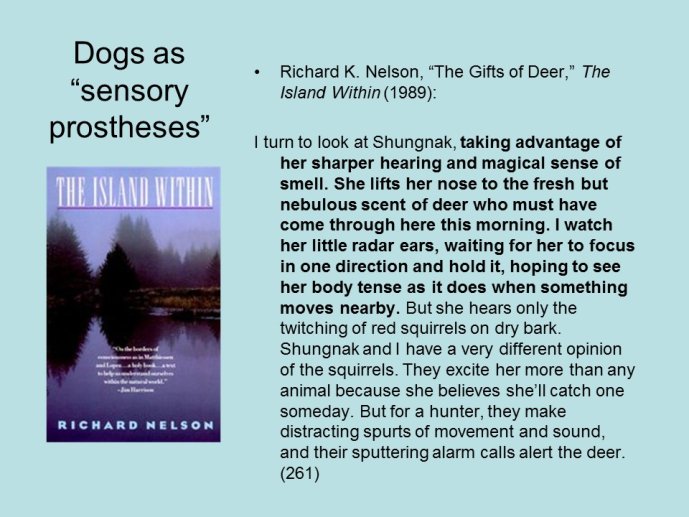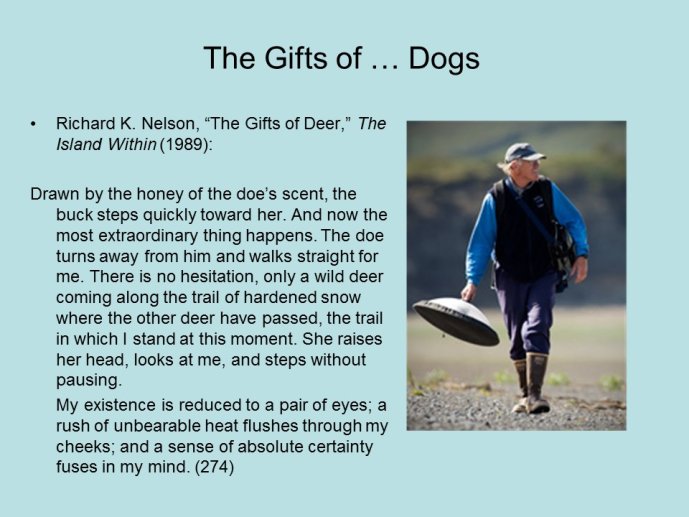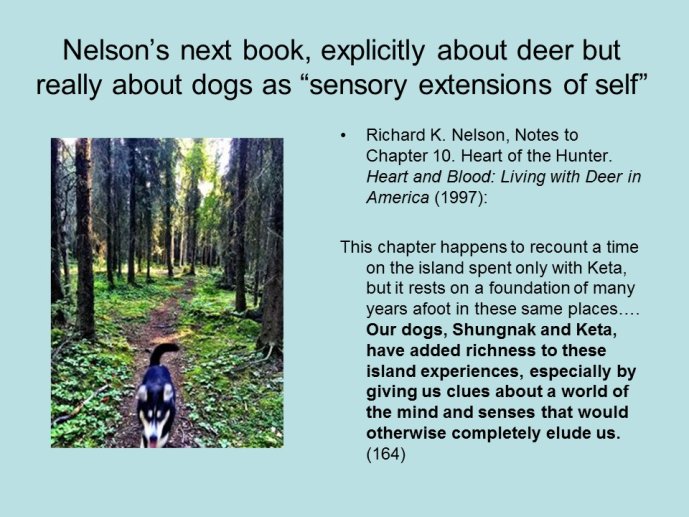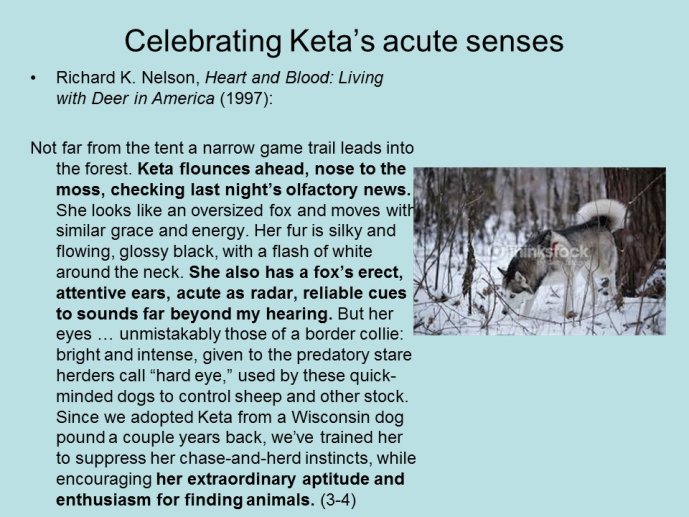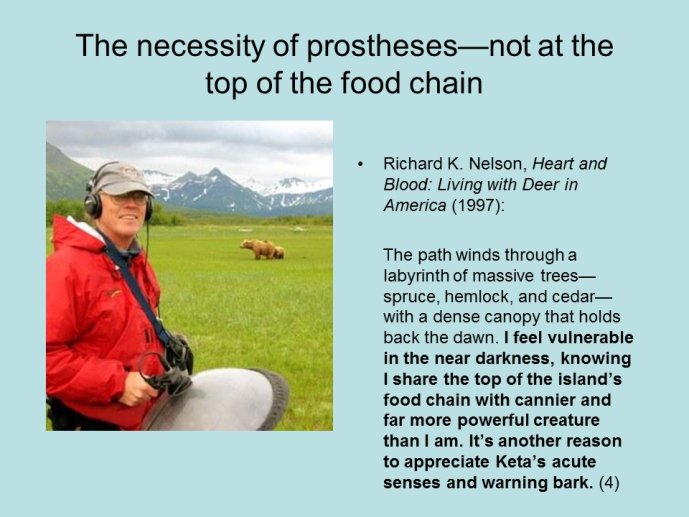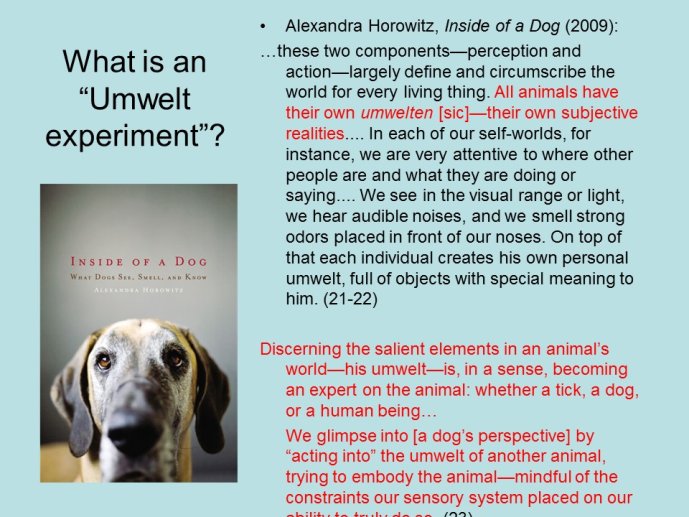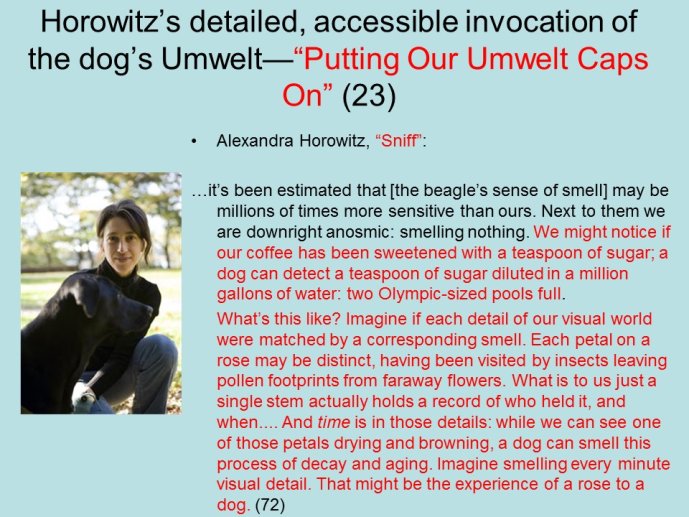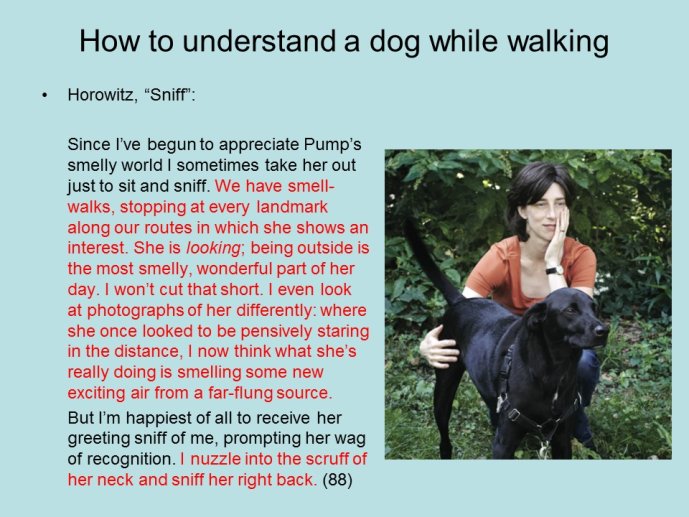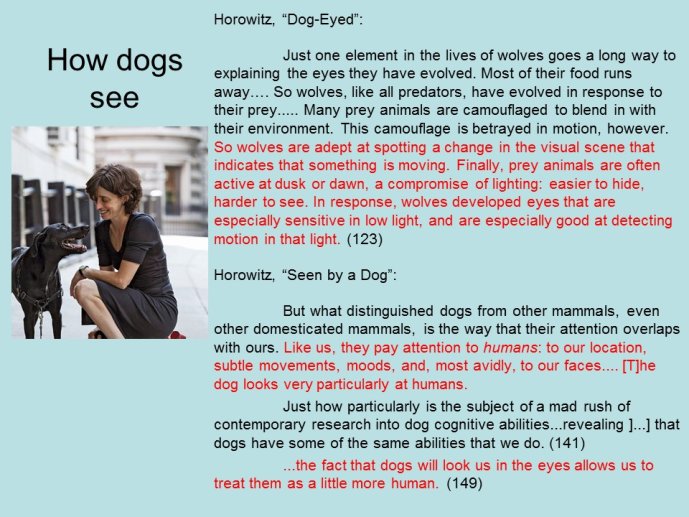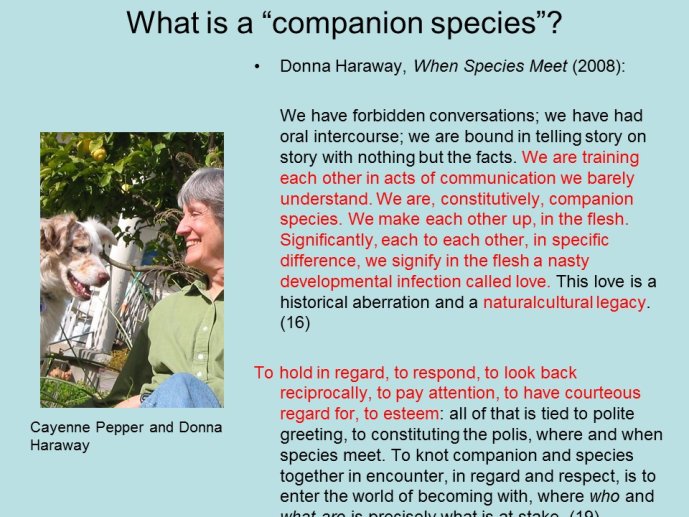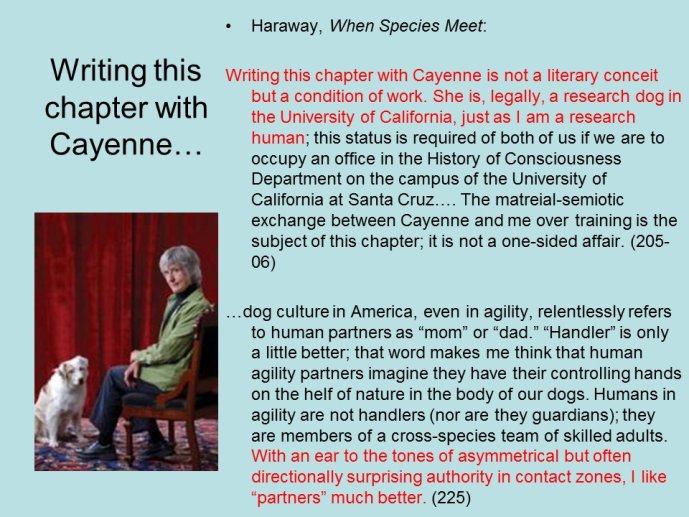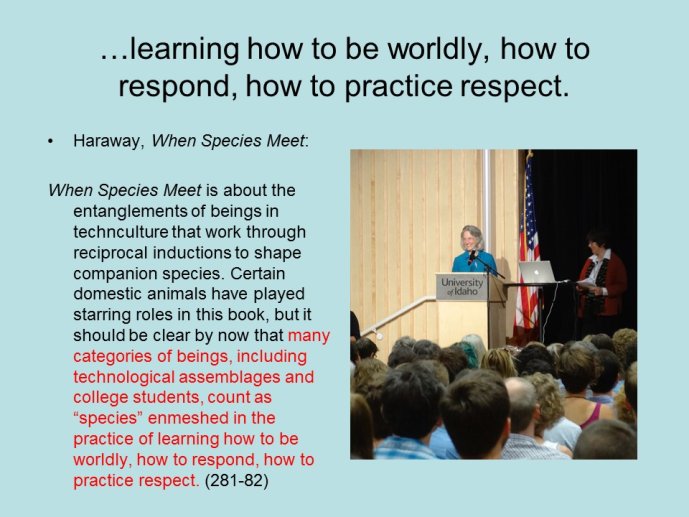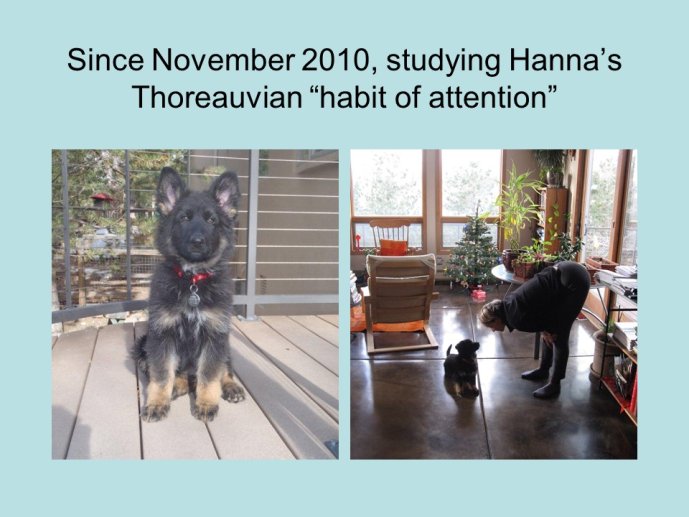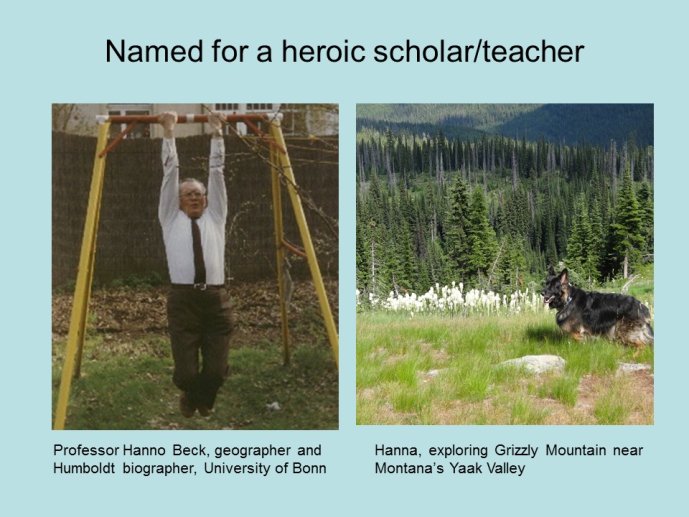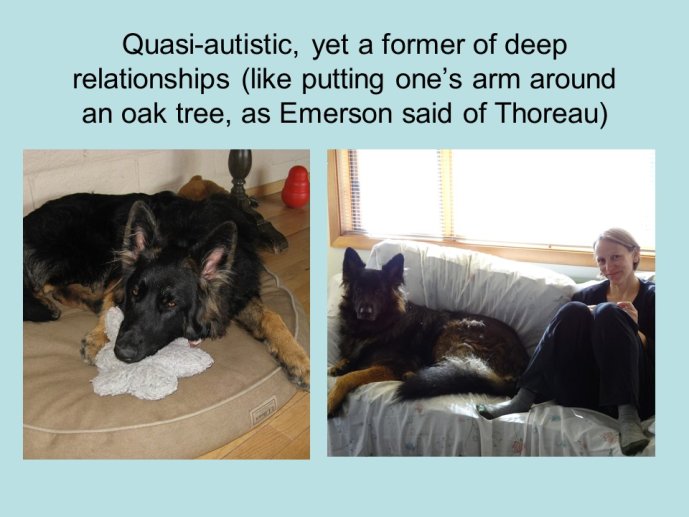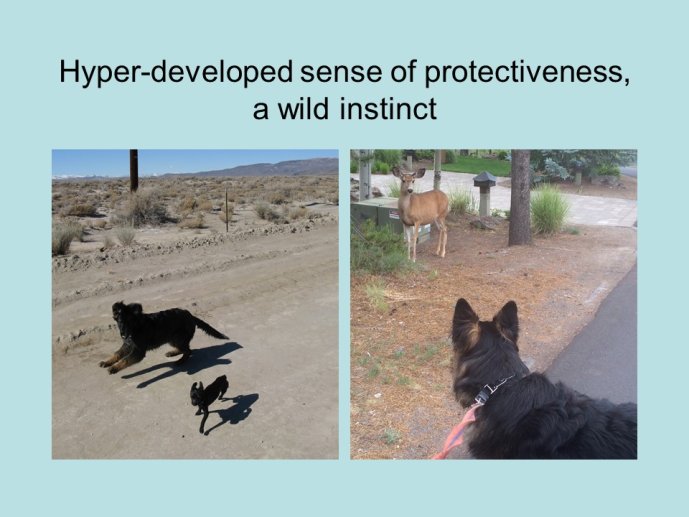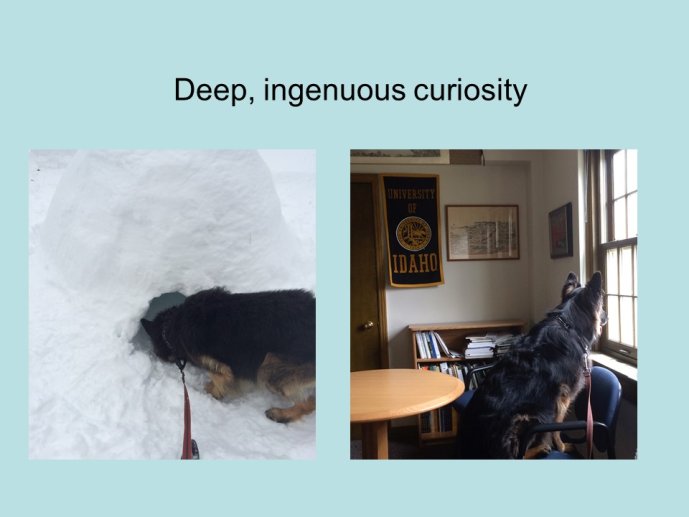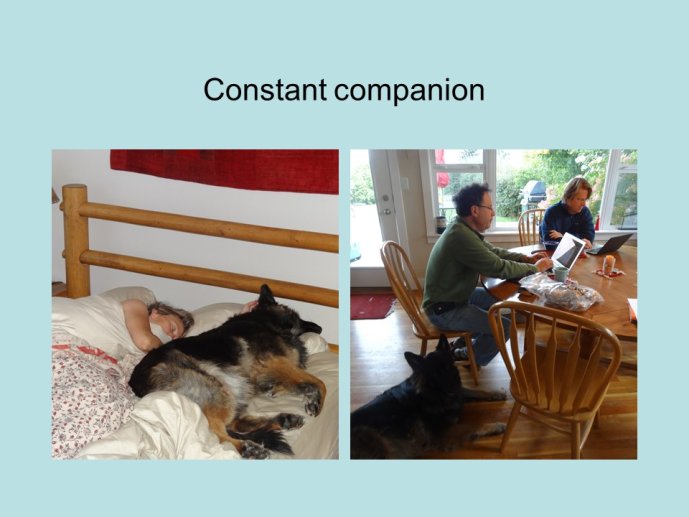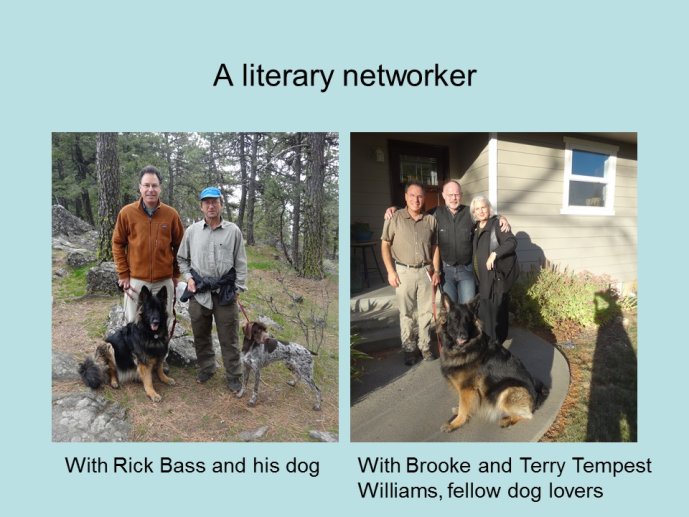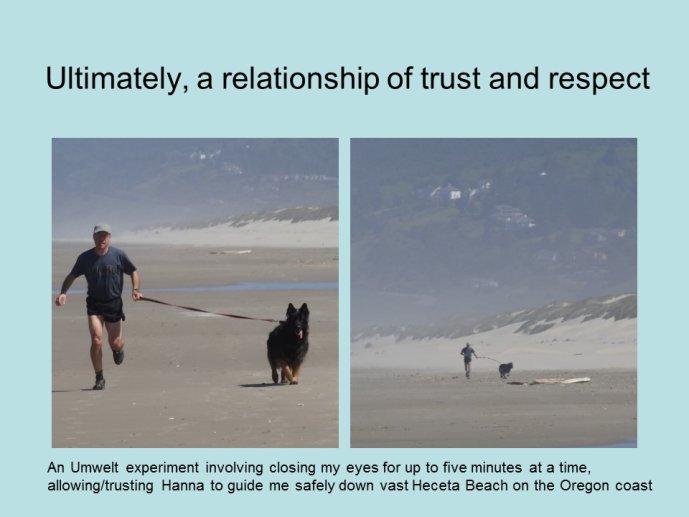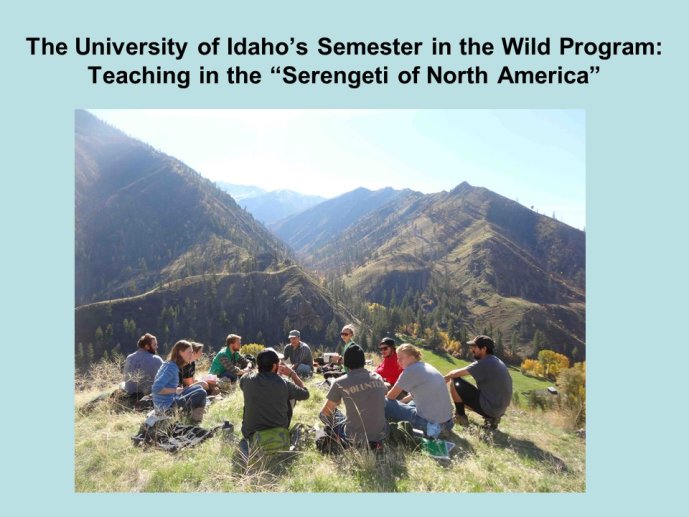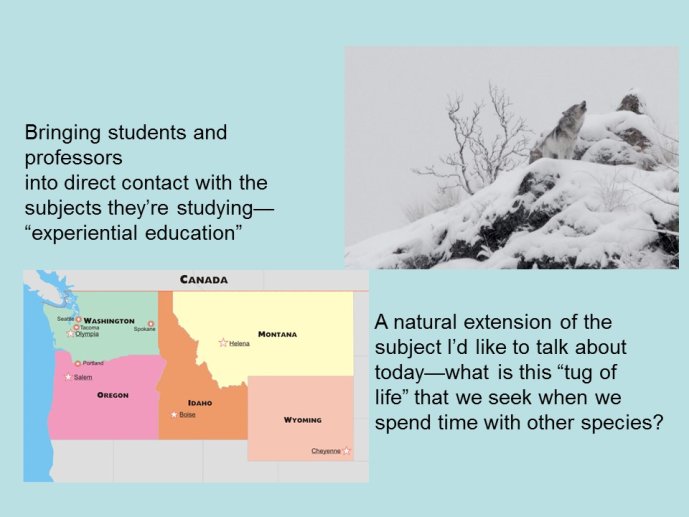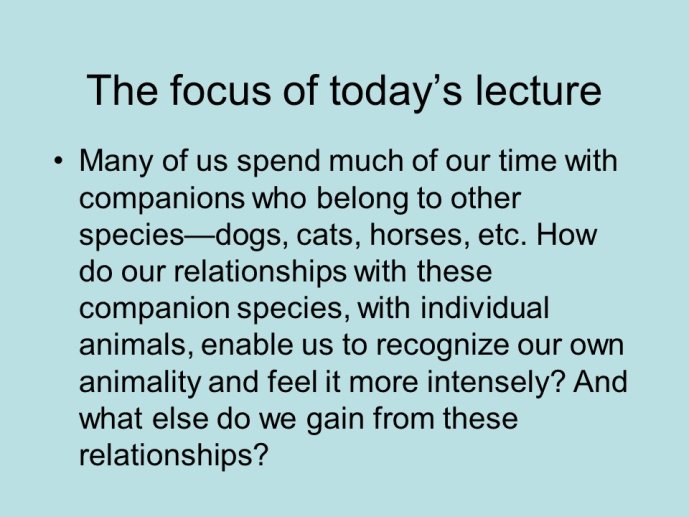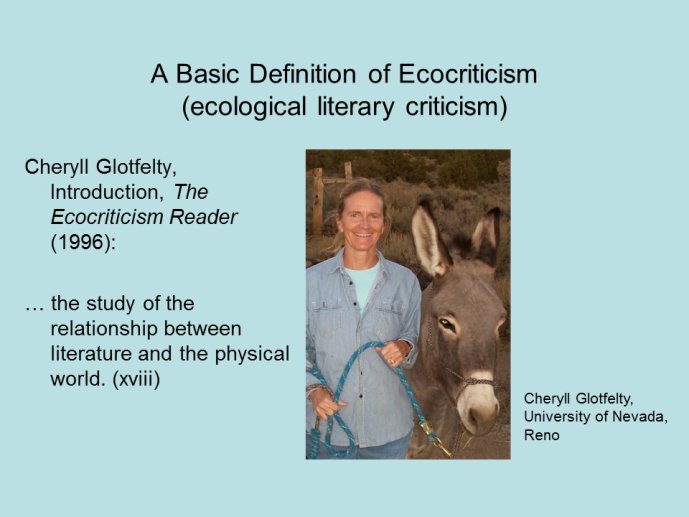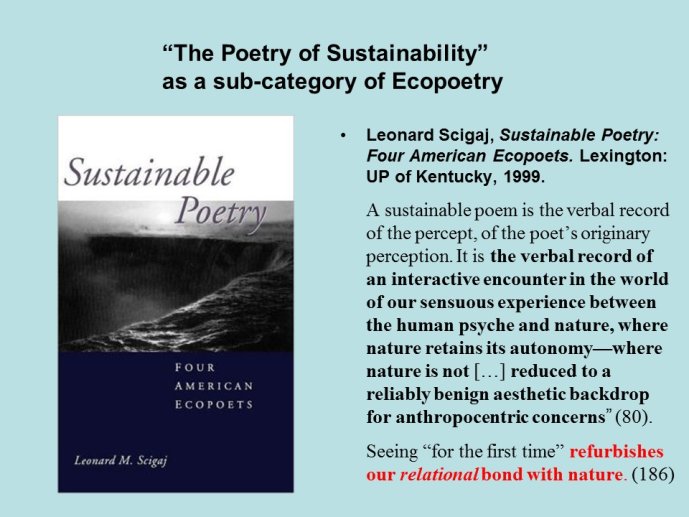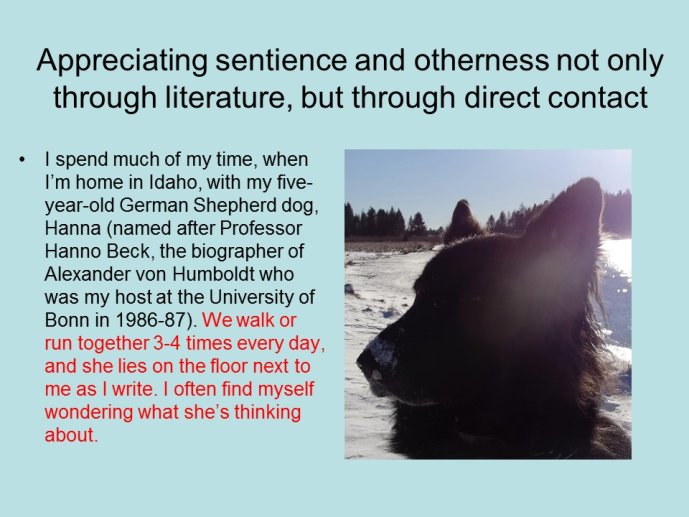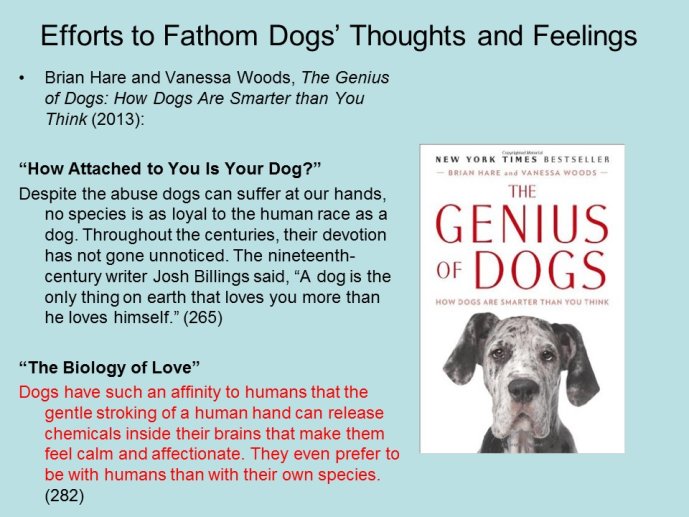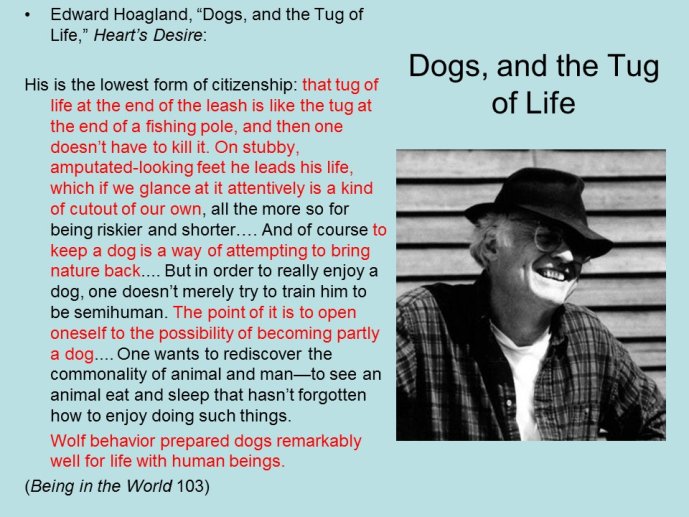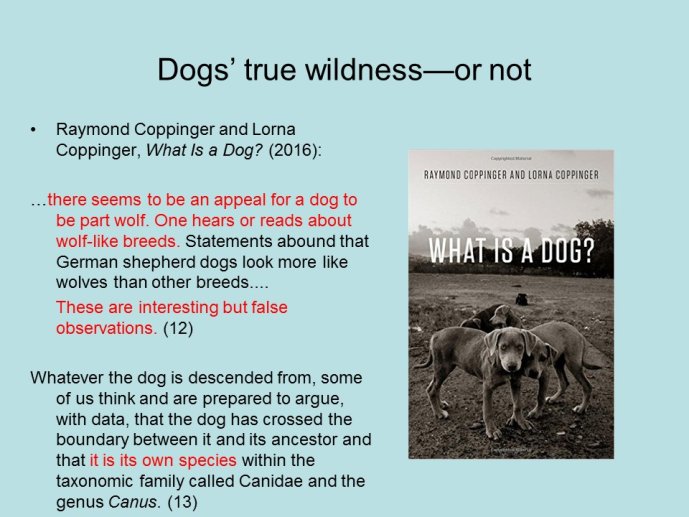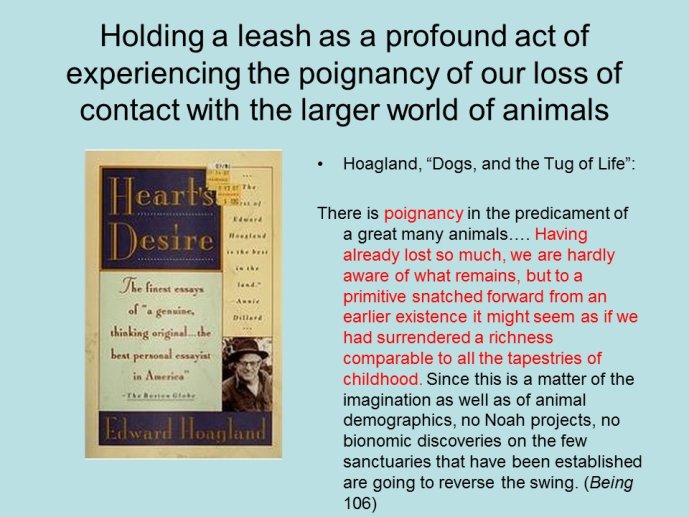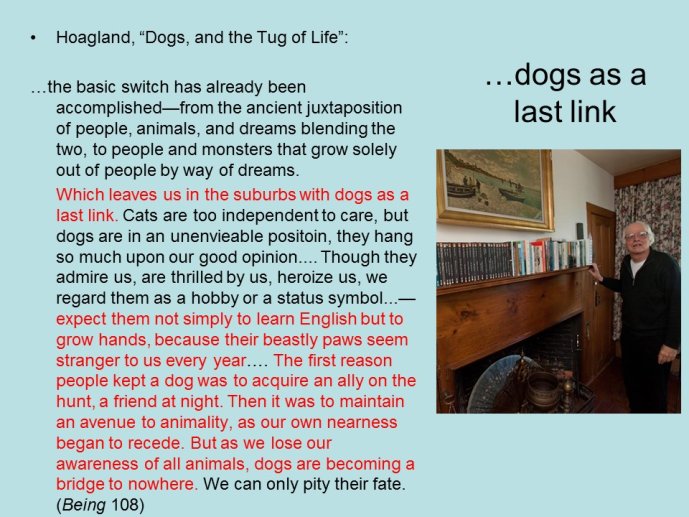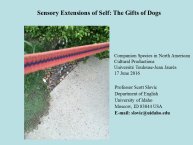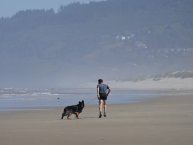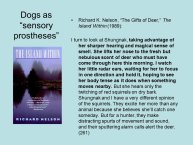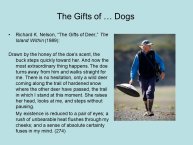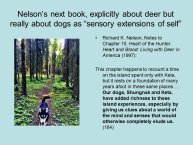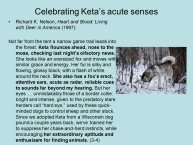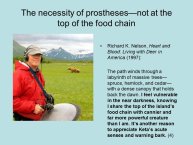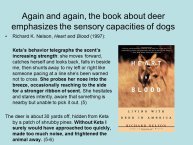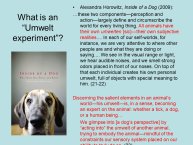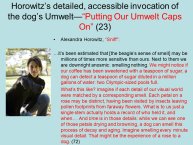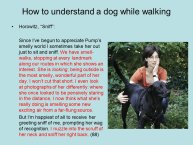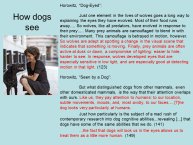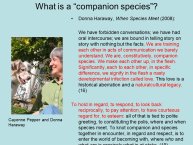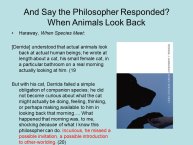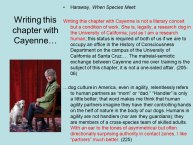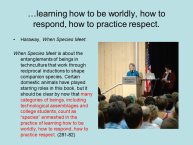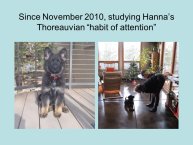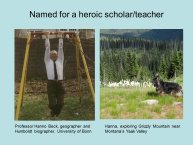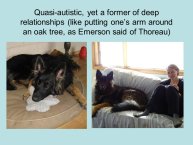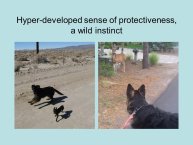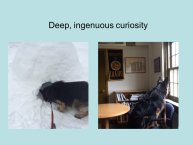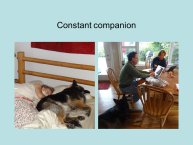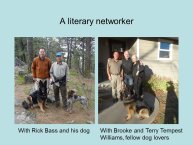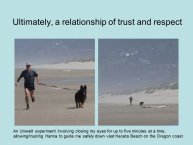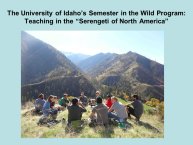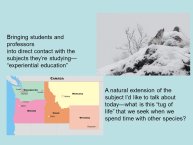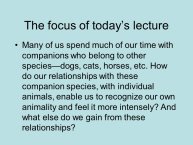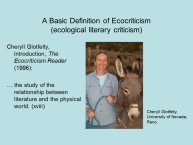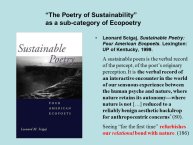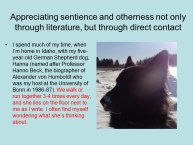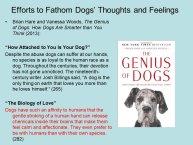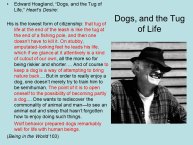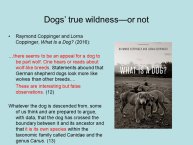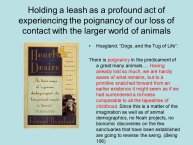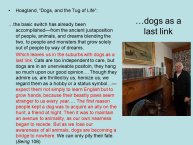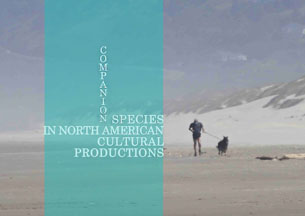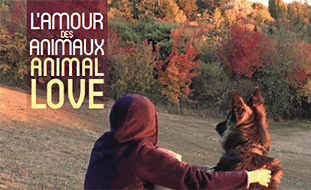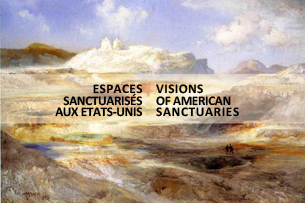Notice
Dogs as Sensory Extensions of Self: A Gift / Scott Slovic
- document 1 document 2 document 3
- niveau 1 niveau 2 niveau 3
Descriptif
Dogs as Sensory Extensions of Self: A Gift / Scott Slovic, Keynote in International Symposium "Companion Species in North American Cultural Productions", organisé, sous la responsabilité scientifique de Claire Cazajous et Wendy Harding, par le Département d'Études du monde anglophone, Université Toulouse Jean Jaurès, 17 juin 2016.
Scholars such as Laurence Goldstein, in The Flying Machine and Modern Literature (1986), have long been thinking of machines, aerial and otherwise, as “protheses,” as empowering extensions of the human self. It is common to think of prosthetic limbs (arms and legs, and these days even hands) as mechanical corrections for disabled bodies—and it makes sense to think of hearing aids and eyeglasses, too, as artifical means of counteracting the effects of aging or accident. But what about the prosthetic contributions companion animals? The “functionality” of pets? Immediately one thinks of“seeing-eye dogs,” a familiar employment of animals not simply as companions but as “support staff.” If one is blind and makes use of a seeing-eye dog, the dog becomes both friend and guide. Even if a person is fit and fully functional, the companionship of an animal -a falcon, a horse, a cat- can contribute to human wellbeing in a purely practical way (hunting,transportation, ridding one’s home of mice). But I am particulary interested in the role of dogs as “sensory extensions of self.” When psychologist Alexandra Horowitz describes the way dogs experience the world (what we might call “dog epistemology”) in Inside of a Dog(2009), she is essentially offering a remarkably non-human world view in terms accessible to human readers—her book itself, based on her life with a particular dog and her research on dogs more generally, works as a sensory extension of the kind I have in mind. When nature writer Richard K. Nelson describes his life with hunting dogs in southeastern Alaska in such works as The Island Within (1989), he reveals these companion animals as sensory prostheses who help him track deer and avoid grizzly bears. When I run with my eyes closed for five minutes at a time along long, flat Heceta Beach on the Oregon Coast, a few steps from the waves, listening to the surf and the sea birds and trusting my companion Hanna to guide me by leash straight ahead, I am relying on my dog as a sensory extension who frees me from my own eyes and enables me to experience the world safely through sound and touch. In this way, companion species can facilitate mind-expanding changes in perspective—I understand this as a gift, an interactive behavior, from my canine companion, not simply as a mechanicalfunction.
Thème
Documentation
Bibliographie sélective
COPPINGER, Raymond, COPPINGER Lorna (2016). What Is a Dog?. Chicago University Press 272 p.
HOROWITZ, Alexandra (2010). Inside of a Dog: What Dogs See, Smell, and Know. New York, Simon and Schuster, 384 p.
SLOVIC, Scott (2008). Going Away to Think: Engagement, Retreat, and Ecocritical Responsibility. Reno (NV), University of Nevada Press, 256 p.
HARAWAY, Donna (2008). When Species Meet. Minneapolis, University of Minnesota Press. 423 p
HARAWAY, Donna (2003). The Companion Species Manifesto: Dogs, People, and Significant Otherness. Chicago, Prickly Paradigm Press, 112 p.
SCIGAJ, Leonard M. (1999). Sustainable Poetry: Four American Ecopoets. Lexington (KY), University Press of Kentucky, 336 p. [rééd. 2014].
HOOVER, Helen (1998). Gift Of The Deer. Minneapolis (MN), University Of Minnesota Press, 224 p.
NELSON, Richard K. (1997). Heart and Blood: Living with Deer in America. New York, A.A. Knopf, 389 p.
GLOTFELTY, Cheryll, FROMM, Harold (1996). The Ecocriticism Reader: Landmarks in Literary Ecology. Athens (GA) University of Georgia Press, 456 p.
SLOVIC, Scott (1992). Seeking Awareness in American Nature Writing: Henry Thoreau, Annie Dillard, Edward Abbey, Wendell Berry, Barry Lopez. Salt Lake City (UT), University of Utah Press, 203 p.
NELSON, Richard K. (1989). The Island Within. San Francisco, North Point Press, 352 p.
HOAGLAND, Edward (1988). Heart’s Desire. New York, Simon & Schuster, 429 p. [rééd. Touchstone, 1991].
DELEUZE, Gilles, GUATTARI, Félix (1980). Capitalisme et schizophrénie 2. Mille plateaux. Paris, Éditions de Minuit, 648 p. [A Thousand Plateaus: Capitalism and Schizophrenia. Ed. University of Minnesota, 1987].
Dans la même collection
-
Companions in Restoration: Buffalo Ranching as Interspecies and Intercommunity Reconciliation, The …
LynchTomCompanions in Restoration: Buffalo Ranching as Interspecies and Intercommunity Reconciliation, The Case of Dan O’Brien’s Wild Idea / Tom Lynch, Keynote in International Symposium "Companion Species in
Avec les mêmes intervenants et intervenantes
-
Travels with Hanna: Dogs and/as Teachers / Scott Slovic
SlovicScottTravels with Hanna: Dogs and/as Teachers / Scott Slovic, conférence plénière
-
The World of Scholarly Publishing: a Seminar Featuring / Scott Slovic
SlovicScottThe World of Scholarly Publishing: a Seminar Featuring / Scott Slovic. Séminaire en deux volets ("From Dissertation to Book" et "Conference Papers and Journal Submissions") organisé le 31 mai 2011 par
Sur le même thème
-
Cold Doings: Early Modern Actions for Our Warmer World
DuckertLowell"Cold Doings: Early Modern Actions for Our Warmer World", a conference by Lowell Duckert, specialist of early modern drama and environmental criticism (University of Delaware).
-
Shakespearean performances. All the World's a (Wet) Stage
DuckertLowellActors in "Pericles" (1607-8) and "The Tempest" (1611) do not merely act drenched during their stormy scenes...
-
Animal Cause. Contemporary Chalenges in Brazilian Society / Zelia Monteiro Bora
BoraZélia MonteiroAnimal Cause. Contemporary Chalenges in Brazilian Society / Zelia Monteiro Bora, conférence plénière in colloque international "L'Amour des animaux / Animal Love", organisé par le Laboratoire
-
Companions in Restoration: Buffalo Ranching as Interspecies and Intercommunity Reconciliation, The …
LynchTomCompanions in Restoration: Buffalo Ranching as Interspecies and Intercommunity Reconciliation, The Case of Dan O’Brien’s Wild Idea / Tom Lynch, Keynote in International Symposium "Companion Species in
-
Ecopoetry and/as the 'ecological work' of language / Thomas Pughe
PugheThomasEcopoetry and/as the 'ecological work' of language / Thomas Pughe, in Journée d'études "Espaces sanctuarisés aux États-Unis - Visions of American Sanctuaries", organisée, sous la responsabilité d

